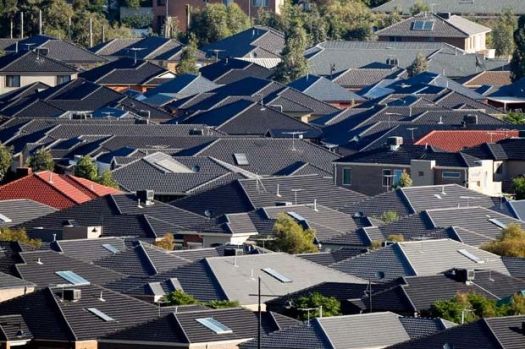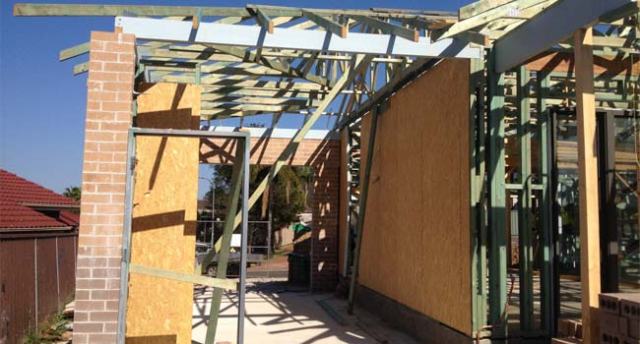Yvonne Keane
Martin Place’s recent tent city has highlighted the plight of homeless people in search of finding stable and lasting accommodation.
Sadly, the face of homelessness is changing, with more and more women finding themselves without a home.
A large proportion of this growing and vulnerable demographic are domestic violence survivors and their children.
According to the Australian Institute of Health and Welfare, domestic violence makes women and children more susceptible to homelessness in two major ways: firstly, violence removes a sense of safety from the home; and secondly, escaping a violent situation requires the woman and her child/children to leave the family home.
As a society we have been treating domestic violence and homelessness as two separate issues for too long now and I think it is time to ask ourselves the question: “Do our current established domestic violence and homelessness services really meet people’s current needs?”
From my experience, the answer is ‘no’.
As the chairwoman of the board of a women’s shelter in Sydney’s North-West, called The Sanctuary, I know that crisis shelters do meet a critical need for women and children who wish to escape unimaginable home lives. However, crisis accommodation – which is available for up to three months – only provides part of a solution in enabling the most vulnerable and at risk community members to live independent lives.
And what of the many survivors who might never access a shelter? What about their struggle to find stable and long-lasting accommodation?
And even if you are lucky enough to find safety and refuge at a shelter, you will still face the hard, painful next step in the process – finding housing that is safe, affordable and appropriate for you and your families.
And so we find that survivors become caught up in an ongoing cycle of fleeing from and returning back to violence because of the lack of stable housing. It’s what we call in the sector a ‘barrier’ that women face on the pathway to safety and independence.
For children, the trauma of frequent moves, topped off with unstable living environments continues the trauma of being exposed to situations of domestic violence.
In my role as both mayor of The Hills Shire and chairwoman of The Sanctuary, I have many conversations with members of the community about domestic violence. I constantly hear the same question over and over again: “Why don’t women just leave?”
Given the reality of housing affordability and the rising cost of living, this question pretty much answers itself.
For some time now, I have been thinking of alternative solutions in which my council could play a role in delivering the resources required to help our community respond to women and children escaping unimaginable scenes of family violence.
We have wonderful women’s shelters, and complementary wrap-around services, across the state and in The Hills, but the missing link is something called transitional housing.
When I became mayor, I found myself in the perfect storm of opportunity. I came up with a way in which I thought that we might be able to help deliver vitally needed transitional housing to our community and along with key council staff, started to research how we could turn this idea into a policy.
Transitional housing is different from affordable housing and from social housing. Transitional housing is the essential ‘next-step’ towards a life of real independence.
It ultimately provides a safe, comfortable and secure place for society’s most vulnerable, to recover, re-build, thrive and make informed and empowered decisions about their lives. The aim of ‘transitioning’ is to help women to ultimately achieve wonderful and independent lives, not lives entirely dependent on social housing.
And on Tuesday, 25 July 2017, The Hills Shire Council made history after my fellow councillors and I unanimously voted to implement the Transitional Housing Policy Framework.
Very simply, this framework will provide a supply of transitional housing in our community and do this at no cost to Council, rate payers or the government.
Our innovative policy proposes a new provision in The Hills Local Environmental Plan 2012 which provides a capped bonus to encourage willing developers to provide transitional housing as part of new residential developments.
The policy would allow a developer who meets the criteria, to build two additional dwellings for every transitional home provided. And we have capped the ‘uplift’ to a maximum of three transitional homes per development.
While the numbers of transitional units would be relatively small in the overall scheme of things, the benefit it could provide for our most vulnerable could be enormous.
The transitional homes would remain the property of the developer and would be managed by community housing providers or not-for-profit organisations, and would be returned to the developer after a set period of time.
I am so enormously proud of this policy and I am even more proud that we will be the first council in the country to offer a new model for transitional housing and deliver it in such a way that there is no cost to the ratepayer.
For me, this is a pinnacle achievement of my time as mayor and probably the most important thing I will ever do in my life.
In NSW, the Minister for the Prevention of Domestic Violence and Sexual Assault, Pru Goward, has said that all ideas are on the table, and I hope to gain her support, and the support of NSW Cabinet to use this model to change the lives and futures of women and children across NSW as a starting point.
It is my great hope that other councils will look at adopting my model – which delivers at no cost to them – as a way to genuinely solve the problems within their own communities. Even greater still, it is my hope that state and territory governments will look at this model and support its adoption as an effective solution across the country.
I have no doubt that this policy will change the lives and the futures of the most vulnerable in our community.
Investing in transitional housing for women leaving family and domestic violence makes sense.
No one should ever have to choose between staying with an abusive partner or becoming homeless.
Councillor Yvonne Keane is the Mayor of The Hills Shire Council, Chair of the Board of the Sanctuary, sits on the NSW Women’s Council for Economic Opportunity and is an elected Director of Local Government NSW.
Comment below to have your say on this story.
If you have a news story or tip-off, get in touch at editorial@governmentnews.com.au.
Sign up to the Government News newsletter
Most read
Scathing report finds little has changed at PwC
Qld council welcomes progress on massive battery system
Inquiry to consider how federal govt can address councils’ sustainability issues
‘Local’ procurement turns out not to be so local, committee hears
Another report finds local government falling down on cyber security


